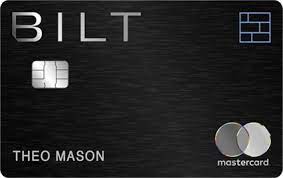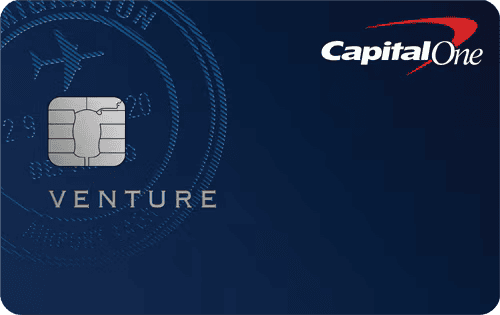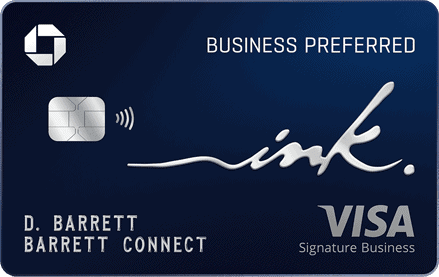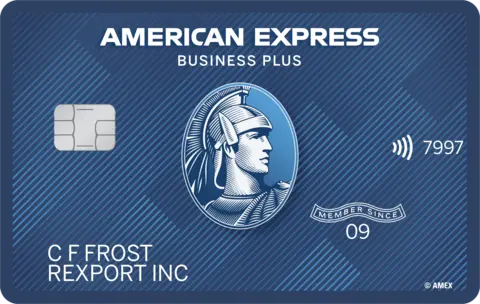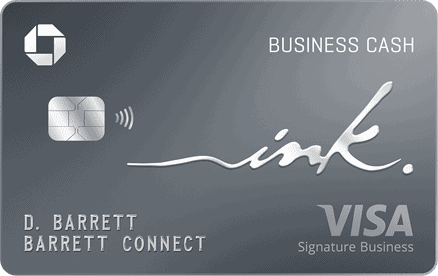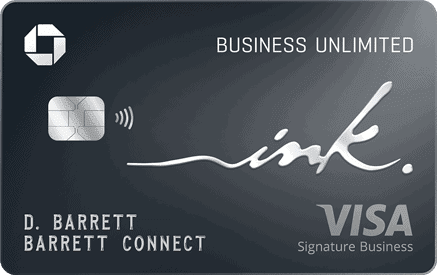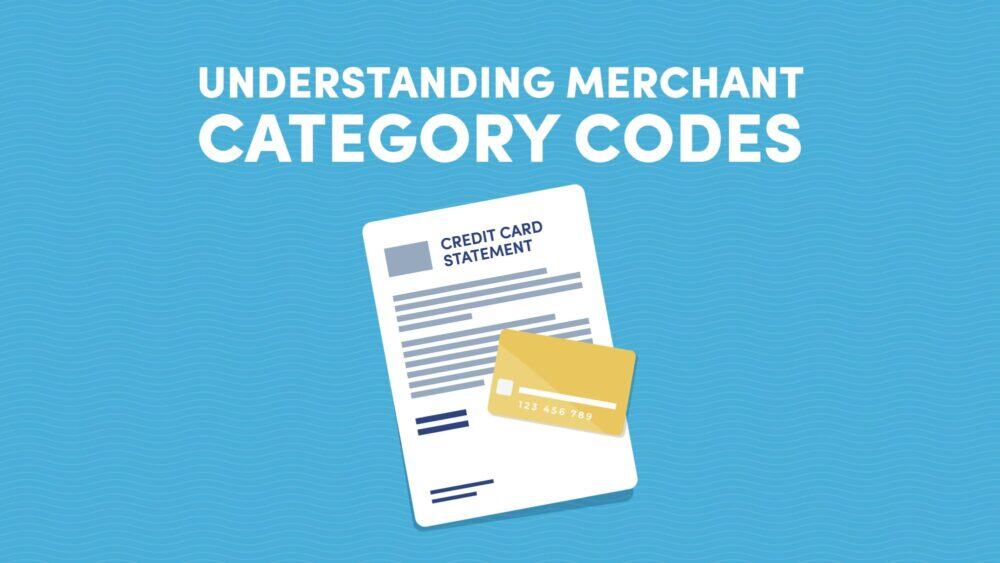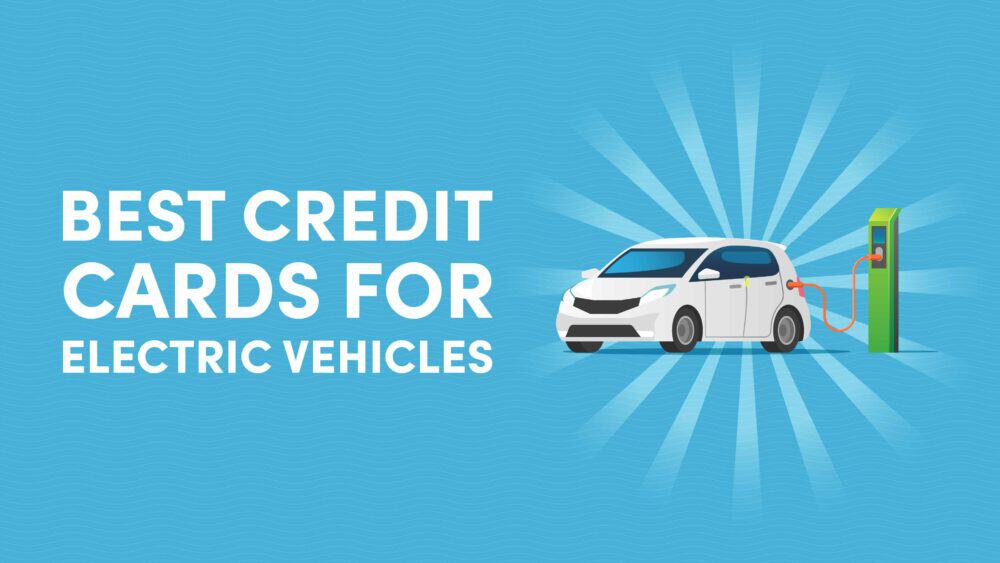
10xTravel is part of an affiliate sales network and receives compensation for sending traffic to partner sites, such as CreditCards.com. This compensation may impact how and where links appear on this site. This site does not include all financial companies or all available financial offers. Terms apply to American Express benefits and offers. Enrollment may be required for select American Express benefits and offers. Visit americanexpress.com to learn more.
Note: Some of the offers mentioned below may have changed or may no longer be available. The content on this page is accurate as of the posting date; however, some of our partner offers may have expired. You can view current offers here.
Every hardcore points and miles enthusiast knows the pain of not being able to pay with a credit card. And the pain is all the more so when it comes to large recurring payments.
Missing the opportunity to earn potentially thousands of points and miles, or cash back, is not our style.
But this doesn’t always have to be the case.
In fact, you can use your credit card to fund the majority of bill payments, rent, business utility bills, and many other recurring expenses.
Maximizing the benefits of earning points while paying bills is a case of timing and using the right card for the right payment.
Let’s look at pros and cons of earning points while paying bills, what type of bills you can pay with a credit card, and which credit cards will give you the greatest return doing so.
Why Should You Use a Credit Card for Bill Payment?
Recurring bills are an inevitable part of life, particularly if you happen to find yourself living in the United States.
The average American pays $1,340 in monthly rental payments and $574 per month in utility bill payments. On top of that, Americans spend an average of $219 per month on subscription payments, from streaming services and gaming to mobile phone contracts and internet costs.
In short, that works out to an average of at least $25,596 per year in recurring bill payments.
Now, imagine you’d pay these bills using a credit card that earns 2X points on all purchases. You’d earn 51,192 points in your card’s given rewards currency—enough to earn some substantial discounts on travel purchases. Alternatively, if your card earns 2% cash back across all purchases categories, you’d get $511.92 back on yearly bill payments.
If you paid these expenses with a debit card, cash, wire or ACH transfer, you’d receive nothing in return. In other words, your money is simply gone.
Due to this cumulative effect of the cost of bill payments, using a credit card to fund these expenses can be hugely rewarding, whether you’re earning cash back or travel rewards. The upfront cost of recurring bills will be partly offset through the points, miles or cashback that you receive in return. These extra rewards can be used for point-funded purchases, among other redemption options.
Benefits of Using a Credit Card to Pay Bills
There are a range of benefits to using your credit card for bill payment, beyond simply earning extra points.
Reach Minimum Spending thresholds with ease.
First, the additional points you’ll earn from bill payment can be used to reach minimum spending requirements.
If you’re trying to earn the welcome bonus on a new credit card, using the card to fund bill payments could give you the extra spending required. That’s where timing comes into play. If you know you have upcoming expenses, timing a new card application so that the welcome bonus period aligns with your bill payment period is an easy way to earn a welcome bonus through natural spending.
Think about university tuition fees, for instance. These are significant, recurring payments that can earn you thousands back in points and miles. If you charge these fees on a new credit card, you’ll be well on your way to earning the welcome bonus.
Likewise, if you’re trying to meet a minimum spending threshold to earn certain rewards, charging bills to your credit card will get you there faster.
For example, if you spend $6,000 in purchases on your Alaska Airlines Visa Signature® Credit Card, you’ll get Alaska Airlines’ $99 Companion Fare (plus taxes and fees from $23) in the following cardmember year.
Therefore, charging a few extra bills to your card could get you to the spending threshold much quicker, allowing you to access special perks.
Simplify Accounting and Money Management.
Second, paying bills using a credit card can make bookkeeping one step easier.
By charging bills to your credit card, you’ll be able to keep the majority of your expenses, from monthly payments to everyday purchases, on one single statement. This makes tracking your finances simpler than managing multiple statements and hanging onto various receipts.
Similarly, if you run a business and fund your expenses using a business credit card, this will likewise make accounting easier.
Secure Your Payments.
A third benefit of paying bills using a credit card is security.
Credit cards afford protections that debit cards, cash and bank transfers don’t.
For example, if your debit card details get into the wrong hands, this can wreak havoc on your personal finances.
While there are mechanisms for reporting fraudulent payments on debit cards, you may be liable to pay some of the damages, depending on when you report the issue. And even if you’re reimbursed for unauthorized transactions, the waiting period between making a claim and receiving reimbursement could be long enough to cause you financial problems, such as the inability to pay your credit card balance or other bills on time.
With a credit card, you’ll enjoy the benefits of zero liability protection. This means you won’t be required to pay the costs involved in any fraudulent or unauthorized transactions. As you’re taking out a line of credit with each payment you make on your card, the funds in your checking account remain protected.
Some credit cards offer additional insurance such as cell phone protection, purchase protection, extended warranty and a range of travel-related insurances.
For example, if you pay your cell phone bill using the Wells Fargo Autograph℠ Card, you’ll receive up to $600 worth of cell protection.
This is why charging bills to your credit card can offer an additional layer of security.

When Shouldn’t You Use a Credit Card for Bill Payment?
In principle, there aren’t any specific bills that you should avoid using a credit card to pay.
However, if you can’t follow the rules of responsible credit card usage, you shouldn’t charge bills to your card.
Specifically, if you won’t be able to pay your balance in full each billing cycle, you shouldn’t use a credit card to fund bill payments. Doing this will only result in increased debt, late fees and eventually high-interest repayments. All these factors will cancel out the benefits of points or cash back earned on bills.
Likewise, if you tend to overspend with your credit card, funding bill payments with your card will likely make things only worse. Instead, you should ensure you’ve paid off any debt and focus on paying balances on time while avoiding unnecessary purchases.
The principles of responsible credit card usage come down to treating your credit card like a debit card, rather than as a line of credit.
Even if you use a card with 0% Intro APR to pay your bills, this can cost you without knowing. Revolving outstanding card balances still contribute to your credit card utilization ratio. The higher your credit utilization ratio is, the bigger the hit will be to your credit score, affecting your ability to apply for premium credit cards, mortgages and financial loans.
Lastly, you need to consider the fees associated with credit card payments. Even with responsible credit card usage, fees can still negate the benefits of points earned in return.
Due to bank interchange fees, merchants, utility companies and landlords tend to tack on surcharges for credit card payments, from 1% to 3% per transaction.
When paying bills with your credit card, you need to calculate whether the rewards you’ll earn in return will offset the cost of merchant processing fees.
How to Pay Bills with a Credit Card
For certain types of bills, paying with a credit card is straightforward.
For example, most subscription services such as streaming, TV or gaming products can be paid for online without incurring a credit card transaction fee. In some cases, you can use autopay to set up recurring billing to avoid missed payments.
For other bills, paying with a credit card requires some strategic thinking.
For instance, home mortgage payments, auto loans and university tuition fee payments can prove difficult to pay with a credit card. This is because credit cards are often either not accepted or come with a transaction surcharge. However, there are ways around such issues.
Should You Pay Bills with a Credit Card if You’ll Incur Transaction Fees?
In the case that your utility company charges credit card transaction fees, you need to calculate if the rewards you’ll earn will offset the fees you’ll pay.
Even if your return is partly eaten into by processing fees, you may still profit from using a credit card to pay your bills. For this reason, you shouldn’t outright avoid paying merchants who charge processing fees, as you may still benefit overall.
A few examples should make this clear.
Let’s say you’ve applied and successfully become a cardholder of the Blue Cash Preferred® Card from American Express. Let’s also say that, like the average American, you pay $6,888 in utility payments per year ($574 per month).
The Amex Blue Cash Preferred® Card has a welcome bonus typically of $250 in cash back after spending around $3,000 within the first six months of card membership. After that, utility payments would earn 1% cash back per dollar, as they’re a non-bonus spending category.
If you used this card to pay the costs of your utility bills, totalling $6,888 per year, you’d receive $288.88 in cash back, including the welcome bonus. If your utility provider charged a credit card processing fee of 3%, you’d end up paying $206.64 per year in fees. This would mean you’d still come out on top in the first year, earning $82.24 in cash back on your utility bill payments.
However, after earning the welcome bonus in your first year, continuing to use this card to fund utility bill payments would no longer be profitable. You’d earn $68.88 in cashback per year, but this would be negated by the $206.64 you’d have to pay in credit card processing fees, meaning you’d end up paying even more than you’d get back.
That’s why it’s key to select a card that has not only a strong welcome bonus, but a strong base earning rate or bonus spending category rate for utility payments (or whichever type of bill you’re planning to pay).
Take the U.S. Bank Cash+® Visa Signature® Card as a different example.
The card has a typical welcome bonus of roughly $200 in cashback after spending $1,000 within the first 120 days of card membership. Additionally, it earns 5% cashback on the first $2,000 spent in two combined eligible purchase categories each quarter. The eligible categories include home utilities.
Assuming the same annual utility expenses as in our previous example, you would more than offset the cost of credit card processing fees in your first year. However, in contrast to the Amex Blue Cash Preferred® Card, you would continue to offset credit card processing fees by $137.76 ($344.4–$206.64) every year (assuming utility bill expenses remained the same).
These two examples illustrate the importance of card selection when paying bills that incur credit card transaction fees.
The welcome bonus is important for offsetting processing fees. However, if you want to continue to pay bills and earn a higher return than what you pay in processing fees, it’s of even greater importance to select a card that has a higher cashback or point-earning rate than the processing fee rate applied by your provider.
Of course, you’ll also need to factor credit card annual fees into the equation. That being said, if you use your card for everyday expenses and maximize the value of its perks, offsetting the annual fee shouldn’t be too much of a problem.
Lastly, it should be mentioned that not all providers who charge credit card transaction fees charge 3%. Some providers charge far less and also charge different fees depending on whether the payment is made in person or online. For example, some universities charge lower fees for in-person credit card transactions, as online transactions will cost them more in third-party payment processing fees.
It’s best to contact your specific provider to inquire about their credit card payment and fee policies.
What if Your Provider Doesn’t Accept Credit Card Payments?
It’s one thing if your provider charges credit card processing transaction fees. It’s another if they don’t even offer credit card payment altogether.
However, the good news is that even if your provider doesn’t accept credit cards, you can often still pay with one by using a third-party payment service.
Plastiq is one such example.
With Plastiq, you can fund a payment using your credit card and have the payment delivered to the payee as a check. That means you’ll still earn credit card rewards and your service provider will be able to accept the payment.
If you run a business, Plastiq could also help you pay contractor or supplier bills before you have the funds to do so, increasing short-term cash flow. This would be cheaper and easier than taking out a loan and would allow you to earn points on your business credit card while doing so. If you use this strategy, just be sure you can pay your balance in full on time.
Melio is also another option for businesses, allowing you to pay business bills using your business credit card.
Whether it’s Melio or Plastiq, business or consumer bills, keep in mind that both of these services charge a credit card transaction processing fee of 2.9%. When calculating the benefits of paying with a credit card, you’ll need to ensure that your return in rewards exceeds the fee of 2.9% for it to be worthwhile.
What Bills Can You Pay with Your Credit Card?
There are a range of bills you can pay with your credit card. While some are straightforward to pay, others might require contacting your provider or going through a third-party payment service.
Utility Bills
Electric, gas, water and many other home services all fall under the category of utility bills.
Some utility companies allow for credit card payments while others may charge a fee or simply don’t offer them as a payment method. In any case, you can check by calling your provider or logging into your online account.
University Tuition Fees
Approximately 85% of private and public colleges in the United States accept credit card payments. These are large recurring payments that can earn you thousands of points.
Unfortunately, most universities charge a credit card processing fee. The exceptions to this rule are:
- Austin Community College
- Howard University
- Stony Brook University
- The College of Environmental Science and Forestry
- University at Albany, the State University of New York
- University at Buffalo, the State University of New York
- University of Nevada, Las Vegas
- University of Tampa*
* In some cases, terms and conditions can apply to waive credit card processing fees at these universities. For example, fees may be waived for specific degree programs or certain categories of students only. Always contact your institution for up-to-date information.
You may benefit from paying through a third-party payment service in some instances, compared to paying directly with the university. Specifically, if the credit card processing fee is higher with the university than the third-party service, then paying through Plastiq, for example, would save you in fees.
Cable, Internet and Cell Phone Bills
Paying for cable, internet and cell phone bills is normally an easy process free of surcharges.
Depending on the card you use, you may even earn bonus points for these purchase categories. Likewise, some cards offer cell phone insurance up to $600 when you pay your phone bill using your card.
Insurance, Rent and Mortgage Payments
Insurance bills such as homeowners insurance and health insurance can normally be paid with a credit card, often without any processing fees.
Mortgage and rent payments are a little more challenging, requiring a third-party payment service in most cases. However, the Bilt Mastercard® has changed the rental payment landscape, enabling you to pay your landlord with a credit card and earn 1X points on your payments, with a maximum earning cap of up to 100,000 points in a calendar year. You’ll need to use the card five times each statement period to earn points (rewards & benefits).
Taxes
You can pay your taxes using a credit card to earn points.
There are three third-party payment processors that support credit card payments to the IRS:
- payUSAtax—1.85% fee (minimum fee of $2.69)
- Pay1040—1.87% fee (minimum fee of $2.50)
- ACI Payment, Inc.—1.98% fee (minimum fee of $2.50)
While every processor charges a fee for credit card payments, they’re all less than 2%, making it easier to gain a greater return in rewards than what you pay in fees.
And if you’re paying business taxes, keep in mind that card processing fees are tax deductible.
There are some rules and regulations when it comes to paying your taxes with a credit card, so be sure to check the official IRS website for the most up-to-date information.

Best Credit Cards for Bill Payment
Here are some of the best credit cards for when it comes to earning points and cash back paying bills. We’ve included both consumer and business cards, so you know which cards can earn you the most on both personal and business expenses.
Bilt Mastercard®
As mentioned above, the Bilt Mastercard® is a game changer when it comes to earning points from bill payments.
With the Bilt Mastercard, you can earn 1X Bilt Points on rental payments, with a maximum cap of up to 100,000 points in a calendar year. Even if your landlord doesn’t accept credit card payments, you can still pay using your Bilt Mastercard and have your payment converted to a suitable payment type for your recipient. You also won’t be charged a transaction fee when paying your rent, giving you a greater return on your spending.
Bilt points can be used for a range of redemptions, as well as transferred to 15 airline and hotel partners at 1:1 transfer ratios.
You can also opt to turn on BiltProtect to protect your credit utilization ratio and thus credit score while paying rent. With BiltProtect, you’ll connect your bank account to Bilt so that they can immediately pull funds from your account to pay off rental charges on your card statement within 48 hours of rental payment. That way, your credit utilization ratio will remain unaffected, your credit score will be protected and you’ll continue to earn points on rent.
You need to use the card five times each statement period to earn points (rewards & benefits). That means you’ll need to charge more than just rental payments on the card if you want to earn points. The card also doesn’t come with a welcome bonus offer. For this reason, the card is really only worth it if you’re making regular rental payments.
That said, the card has no annual fee (rates & fees), making it an easy one to keep in your wallet.
Here’s a summary of what the Bilt Mastercard has on offer:
- Earn 1X points on rental payments
- Earn 2X points on travel
- Earn 3X points on dining
- Earn 1X points on all other purchases
- Earn double points on Rent Day (excluding rental payments)
- Access to World Elite Mastercard Concierge benefits
- BiltProtect feature to protect credit score
- No foreign currency conversion fee
U.S. Bank Cash+® Visa Signature® Card
The U.S. Bank Cash+® Visa Signature® Card stands out when it comes to paying a variety of bills.
The card earns 5% cash back on the first $2,000 spent in combined eligible purchases within two categories you choose, per quarter. Eligible categories include the following:
| Home utilities | Gyms/fitness centers |
| Internet, streaming and TV | Select clothing stores |
| Cell phone | Ground transportation |
| Electronic stores | Sporting goods stores |
| Department stores | Movie theaters |
| Fast food | Furniture stores |
That means you can earn 5% cash back on the first $2,000 spent per quarter on utility, internet, streaming, TV, cell phone and gym bills. If you hit the $2,000 spending cap every quarter, that translates to $100 cash back per quarter on bill payments, amounting to $400 per year in cash back.
To receive the 5% cashback benefit, you’ll need to activate your two categories every quarter. The card also lets you activate one unlimited 2% cash back spending category, from the following options:
- Restaurants
- Gas stations and EV charging stations
- Grocery stores and delivery
For a $0 annual fee, this card offers excellent value when earning points paying bills.
The only downside to this card is that it charges a foreign transaction fee of 3%. Likewise, 5% cash back is capped to $2,000 in charges per quarter. However, considering how rare it is to find a card that offers this level of rewards earnings on utility bill payments, you’ll be hard-pressed to find a better offer.
Here’s a summary of what the card has on offer:
- Earn 5% cash back on the first $2,000 spent in combined eligible purchases within two categories you choose, per quarter
- Earn 2% unlimited cash back on one everyday category
- Earn 1% unlimited cash back on all other purchases
- Earn 5% cash back on prepaid flight, hotel and car reservations booked through the Rewards Travel Center
Chase Freedom Unlimited®
The Chase Freedom Unlimited® offers simple reward earning which you can use for a variety of your bills. In particular, you can use this card for bills that don’t fall into bonus categories on other cards.
In terms of bill payment, the card earns 1.5% on all eligible purchases. If you spent $6,888 on utility bills every year (like the average American), using the Chase Freedom Unlimited® could net you more than $100 in cash back per year (excluding transaction fees).
However, one of the standout benefits of the card is pairing it with an Ultimate Rewards earning card, such as the Chase Sapphire Reserve®. By doing this, you’ll be able to convert cashback rewards into Ultimate Rewards points when you transfer them to your Sapphire account. You can use Ultimate Rewards for a wide range of redemptions, as well as hotel and airline partner transfers.
For a $0 annual fee, it is easy to keep this card in your wallet and use it to earn on bill payments.
The only drawback to the card is its 3% foreign transaction fee. However, in terms of bill payment, this shouldn’t pose much of a problem.
Here’s a summary of what the Chase Freedom Unlimited® offers:
- Earn 5% on travel purchases made through Chase Travel℠
- Earn 3% on drugstore and dining purchases, including eligible delivery and takeout services
- Earn 1.5% on all other eligible purchases
Capital One Venture Rewards Credit Card
The Capital One Venture Rewards Credit Card stands out as a card which can give you a return on bill payment while offering some premium travel perks. For an annual fee of $95, the card offers significant value.
When paying bills that don’t fall into bonus categories, the Capital One Venture Rewards Credit Card will offer a helping hand, earning you unlimited 2X miles on all eligible purchases.
If you charge $6,888 in utility bill payments to the card, that would amount to 13,776 miles. Capital One miles have a redemption value between 1 cent to 1.4 cent, depending on whether you redeem them through the Capital One portal or transfer them to airline or hotel partners. That means you’d earn approximately between $137.76 and $192.86 back in Capital One miles, which can be transferred to a range of airlines and hotels at 1:1 ratios.
On top of this, the card offers up to $120 Global Entry or TSA PreCheck® statement credit every four years, as well as Hertz Five Star® status. You’ll also enjoy two complimentary visits to Capital One lounges every year.
Here’s a summary of what the Capital One Venture Rewards Credit Card has on offer:
- Earn 5X miles on hotels, vacation rentals and rental cars booked through Capital One Travel
- Earn 2X miles on all eligible purchases
- Zero foreign transaction fees
- Up to $120 Global Entry or TSA PreCheck® statement credit every four years.
- Hertz Five Star Status*
- Two complimentary visits per year to Capital One lounges
* Upon enrollment, accessible through the Capital One website or mobile app, eligible cardholders will remain at upgraded status level through December 31, 2024. Please note that enrolling through the normal Hertz Gold Plus Rewards enrollment process (e.g. at Hertz.com) will not automatically detect a cardholder as being eligible for the program and cardholders will not be automatically upgraded to the applicable status tier. Additional terms apply.
Capital One Venture Rewards Credit Card
75,000
miles
once you spend $4,000 on purchases within 3 months from account opening, equal to $750 in travel.
Annual Fee: $95
Citi Double Cash® Card
The Citi Double Cash® Card is a simple $0 annual fee card with great redemption value potential for bill payment.
When using the card, you’ll earn unlimited 2% cash back on all purchases: 1% when you buy and 1% when you pay. This makes it perfect for bill payment.
However, the real special feature of the Citi Double Cash® Card is that cash back is earned in the form of ThankYou points. This means you can either redeem your earnings as simple cash back or you can transfer them to a limited range of Citi’s transfer partners: JetBlue TrueBlue, Wyndham Rewards and Choice Privileges.
If you opt to transfer your points, you’ll transfer them at a ratio of 1:1.5 for Choice Privileges, and 1:0.8 for JetBlue TrueBlue and Wyndham Rewards. While it may not be the best redemption value, it’s still a competitive offering for a $0 annual fee card.
Yet, the real value of this card lies in pairing it with a premium Citi card, such as the Citi Strata Premier℠ Card. By doing this, your ThankYou points can be transferred to Citi’s full range of almost twenty transfer partners, at better point transfer ratios of up to 1:1.
By using this strategy, the points you earn on bill payments will go even further and can be used to fund discounted travel redemptions.
The main downside to this card is its lack of bonus spending categories, as well as its 3% foreign transaction fee. Yet if you use it as part of the strategy suggested above, these downsides shouldn’t affect your success.
Here’s a summary of the Citi Double Cash® Card’s features:
- Earn 2% on all purchases (1% when you buy and 1% when you pay)
- Earn an extra 3% cash back on hotels, car rentals and attractions booked through the Citi Travel℠ portal, on top of the standard 2% cash back (total 5% cash back; offer ends Dec. 31, 2024)
- Point transfers to JetBlue TrueBlue, Wyndham Rewards and Choice Privileges
- ThankYou points are transferable to premium Citi cards for higher value redemptions and the full range of Citi partner transfers
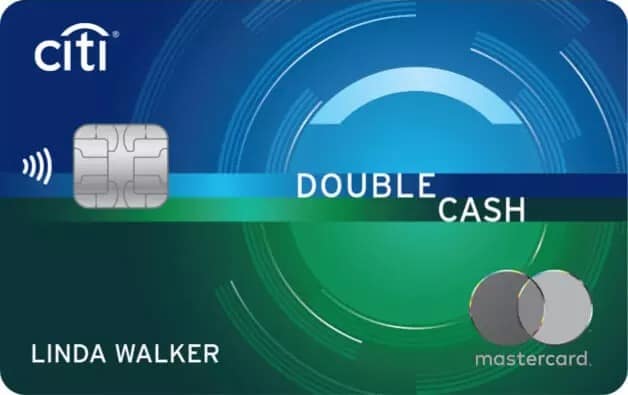
Citi Double Cash® Card
$200
cash back
after you spend $1,500 on purchases in the first 6 months of account opening. This bonus offer will be fulfilled as 20,000 ThankYou® Points, which can be redeemed for $200 cash back.
Bank of America® Customized Cash Rewards Credit Card
The Bank of America® Customized Cash Rewards credit card can help you earn cash back on subscription service payments, all while paying $0 in annual fees.
The card earns 3% cash back in one eligible activated category of your choice, as well as 2% cash back on grocery stores and wholesale clubs. Across these categories, you can earn a maximum of $2,500 in combined purchases per quarter, and 1% thereafter if you exceed the cap.
Eligible categories include streaming, internet, cable and phone plans, among other categories, making this the perfect card for paying subscriptions.
If you were to spend $2,500 per quarter on subscription payments in the 3% category, that would equate to $75 in cash back per quarter, or $300 back per year.
And if you happen to be a Preferred Rewards member, you’ll be able to earn 25% to 75% more cash back. That means you could earn between 3.75% and 5.25% instead of the standard 3%, and between 2.50% and 3.50% instead of 2%.
To become a Preferred Rewards member you need to have an active Bank of America checking account in addition to a minimum three-month average balance of $20,000 or more in Bank of America deposit and/or Merrill investment accounts. The higher your three-month average balance is, the more cash back you’ll earn.
The only drawback to the card is its 3% foreign transaction fee. However, for subscription payments only, that fee shouldn’t pose a problem as long as your providers are based in the U.S.
Here’s a summary of what the card has on offer:
- Earn 3% cash back in one eligible activated category of your choice and 2% cash back on grocery stores and wholesale clubs, up to $2,500 in combined purchases per quarter
- Earn 1% cash back on all other purchases
- Earn 25% to 75% more cash back as a Preferred Rewards member

Ink Business Preferred® Credit Card
The Ink Business Preferred® Credit Card is perfect for paying business subscription bills.
The card earns 3X points on the first $150,000 spent in combined purchases for the following categories:
- Travel
- Shipping purchases
- Cable, internet and phone services
- Advertising purchases made via search engines and social media sites
This means you can get a big bang for your buck when paying for internet, cable and phone bills, as well as shipping and advertising bills, using your card.
Chase Ultimate Rewards can be transferred to a wide range of airline and hotel transfer partners for 1:1 redemptions.
For an annual fee of $95, you can more than offset this cost through bill payments in the 3X points category.
Here’s a summary of what the card offers:
- Earn 3X points on the first $150,000 spent in combined purchases for eligible categories, per calendar year
- Earn 1X point on all other purchases
- Redeem points for more value when you purchase travel through Chase TravelSM
- No foreign transaction fees
- Issue employee cards for free and set spending limits
Chase Ink Business Preferred® Credit Card
90,000
bonus points
after you spend $8,000 on purchases in the first 3 months after account opening.
Annual Fee: $95
The Blue Business® Plus Credit Card from American Express
The Blue Business® Plus Credit Card from American Express is a $0 annual fee card (see rates & fees), offering strong flat rate earnings on all business purchases. This makes the card ideal for business bills that don’t fall into bonus categories.
The card earns 2X points on everyday eligible business expenses on up to $50,000 in purchases, earning 1X point thereafter. That means if you charge up to $50,000 in business bills to the card, you’ll receive 100,000 Amex points. That’s more than enough points to fund a business or first class ticket with certain Amex transfer partner airlines (depending on the destination and season).
This is a great $0 annual fee business card that earns Amex Membership Rewards. These points can be transferred to many hotel and airline partners at 1:1 ratios.
Just be mindful that the card charges 2.7% for foreign transactions. Therefore, try to stick to paying bills from U.S. providers only.
In summary, the card offers:
- 2X points on everyday business purchases such as office supplies or client dinners. 2X applies to the first $50,000 in purchases per year, earning 1X point thereafter. Terms and limitations apply.
- Issue employee cards free of charge
- Connect to QuickBooks for transaction reconciliation
The Blue Business® Plus Credit Card from American Express
15,000
Membership Rewards®
after you spend $3,000 in eligible purchases on the Card within your first 3 months of Card Membership
Ink Business Cash® Credit Card
When it comes to paying phone, internet, and cable TV service bills, the Ink Business Cash® Credit Card is hard to beat.
The card earns 5% cash back on the first $25,000 spent in combined purchases for the following categories:
- Office supply store purchases
- Internet, cable and phone services
That translates to $1,250 in cash back per year, assuming you hit the spending cap. After you reach the $25,000 cap, you’ll earn 1X points on further purchases in these categories.
This makes the card highly competitive when it comes to business phone, internet and cable bill payments, especially considering it’s a $0 annual fee card.
Be aware that the card charges a 3% foreign transaction fee. However, as long as your providers are based in the U.S., this shouldn’t pose a problem for bill payment.
Here’s a summary of what the card offers:
- Earn 5% cash back on the first $25,000 spent in combined purchases for eligible categories
- Earn 2% cash back on the first $25,000 spent in combined purchases at gas stations and restaurants
- Earn 1% cash back on all other eligible purchases
- Issue employee cards at no extra cost and set spending limits
Chase Ink Business Cash® Credit Card
Earn $350
bonus cash back when you spend $3,000 on purchases
in the first three months and additional $400 when you spend $6,000 on purchases in the first six months after account opening
Capital One Spark Miles for Business Card
The Capital One Spark Miles for Business Card earns you a strong flat rate of miles on every business bill payment, as well as giving you access to certain travel perks.
Using the card, you’ll earn an unlimited 2X miles on every business purchase. This makes it suitable for paying business bills that fall outside bonus spending categories.
The card also offers up to $120 Global Entry or TSA PreCheck® statement credit every four years, as well as two complimentary visits per year to Capital One lounges.
It’s also free of foreign transaction fees, making it perfect for earning miles on international business payments to suppliers, contractors or service providers abroad.
The card charges an annual fee of $95, which is waived in the first year. With a strong earning rate on all business purchases in addition to travel perks, offsetting this fee will be a breeze.
Here’s a summary of what the card offers:
- Earn 2X miles on all eligible purchases
- Earn 5X on hotels, vacation rentals and rental cars booked through Capital One Travel
- Up to $120 Global Entry or TSA PreCheck® statement credit every four years
- Receive two complimentary visits per year to Capital One lounges
- Zero foreign transaction fees
- Issue employee cards for free and set spending limits
Capital One Spark Miles for Business
50,000
Bonus Miles
after you spend $4,500 in the first 3 months
Annual Fee: $0 for your first year, then $95.
Final Thoughts
Whether it’s business or personal bills, there are many cards out there which can help you earn points or cash back on your expenses.
As these expenses add up throughout the year, charging them on a travel rewards credit card is an easy way to earn a return on organic (and unavoidable) spending.
The good news is that the cards that’ll earn you the most on bill payments typically have annual fees of $95 or even $0. So in most cases, adding one of these cards to your wallet should fit in with any existing card strategy.
Just be sure to always pay off your balance in full. If you don’t do this, the benefits of points and cash back will be negated.
Likewise, if your service provider does charge a transaction fee for credit cards, do the math and calculate if you can still earn a return that’ll exceed the cost of the fee. If the fee will end up losing you more than you’ll earn in points or cash back, then stick to debit cards and bank transfers.
New to the world of points and miles? The Chase Sapphire Preferred® Card is the best card to start with.
With a bonus of 75,000 bonus points after you spend $5,000 on purchases in the first 3 months from account opening. , 5x points on travel booked through Chase Travel℠ and 3x points on restaurants, streaming services, and online groceries (excluding Target, Walmart, and wholesale clubs), this card truly cannot be beat for getting started!
Editors Note: Opinions expressed here are author’s alone, not those of any bank, credit card issuer, hotel, airline, or other entity. This content has not been reviewed, approved or otherwise endorsed by any of the entities included within the post.



